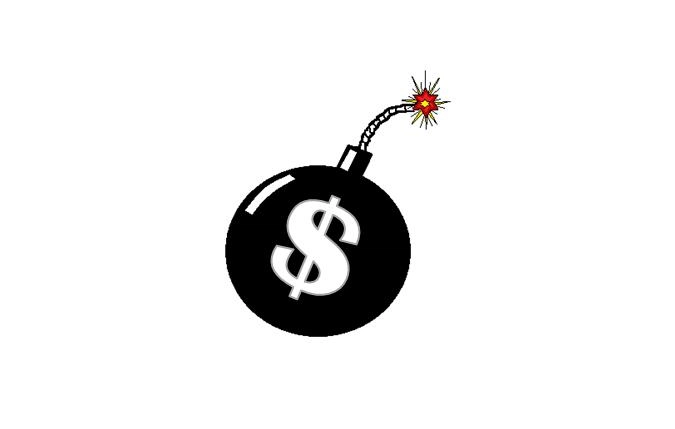Sept. 19, 2022
Permission to republish original opeds and cartoons granted.
The dollar is as strong as it was at the height of the Covid recession

By Robert Romano
The nominal broad U.S. Dollar Index reported by the Federal Reserve is showing its strongest readings since the height of the Covid pandemic in April 2020 when the global economy was shutting down and 25 million jobs were lost in the blink of an eye.
The latest reading of 123.9 is edging close to its high of 126 in late March 2020 as another global recession looms and central banks and investors once again begin to flood into U.S. dollar-denominated assets like treasuries and other debt, with an added incentive: interest rates are much higher.
10-year treasuries now list at 3.5 percent. And 30-year mortgages are up over 6 percent, the highest since 2008. Which is what happens when inflation is at 40-year highs, where consumer inflation is still above 8 percent as global production is still struggling to keep up with demand.
But besides interest rates, the relative strength of the dollar is another potential tool against inflation, but it can be a double-edged sword, for just as the dollar being too weak can spark a run of inflation, if it is too strong, the opposite can occur with deflation, as in the Great Depression in the 1930s and the Great Recession of 2008-2009 when the U.S. housing market crashed.
The implication is that with the dollar so strong, asset prices invariably have to come down, which they already are in equities and other commodities, with oil now down to the low-to-mid $80s and even natural gas prices cooling slightly, with Title Transfer Facility (TTF) in the Netherlands down from more than $85 per 1,000 cubic feet in early September to just more than $60, according to the U.S. Energy Information Administration (EIA).
But with Russia now threatening to shut down not just natural gas shipments via the Nordstream pipeline to Germany, but also wider shipments throughout Europe this winter, there could still be upward on prices for the foreseeable future as European states seek to stock up on supplies.
Either way, all signs point to recession in Europe, and that may be a big part of the reason why prices are coming down there already. The question of severity appears to come down whether Europe—with the assistance of the U.S.—can successfully offset the loss of Russian natural gas on their markets.
In the meantime, a Russian-Ukrainian agreement to allow Ukrainian wheat to ship out from the Black Sea could be in jeopardy, just when global prices were just starting to come down, once again threatening the supply of wheat particularly for the poorer countries who depend on imports. With supplies already strained, starvation in a world where 8 million people tend to starve in an average year is a real concern.
Now, all eyes turn to the Federal Reserve’s Sept. 20-21 meeting, where it is expected to raise the Federal Funds Rate another 0.75 percent to an effective range of 3 percent to 3 1/4 percent.
This raises the rate that banks can borrow from the Fed, and has the effect of destroying money by taking it out of the system. Not a bad idea, considering the inflation but also the fact that the M2 money supply reported by the Fed increase more than $6 trillion to combat the Covid recession.
But monetary policy has its limits. While the Fed can address excess money flowing through the system left over from the Covid stimulus packages created by Congress, it cannot address the global supply crisis as the world still struggles to get production back up to where it was before Covid, especially with deliberate policies to ratchet down carbon-based energy production of coal and oil.
Now, with another global recession either already here or just about to strike, demand will take another hit and so too will production. Oil prices are cooling even with OPEC lowering its production quotas.
The danger is that once labor markets feel the conditions of the recession—leading into 2023—the Fed will once again loosen policy, Congress will issue another stimulus and the dollar will weaken, but the supply issues will not have been fully addressed. If so, the recession might only briefly cool off the inflation, but once the dollar starts weakening it could experience a resurgence, squeezing household budgets once again and making sure you pay at the pump. As usual, stay tuned.
Robert Romano is the Vice President of Public Policy at Americans for Limited Government.
To view online: https://dailytorch.com/2022/09/the-dollar-is-as-strong-as-it-was-at-the-height-of-the-covid-recession/
Cartoon: Pillow Talk (Revised)
By A.F. Branco


